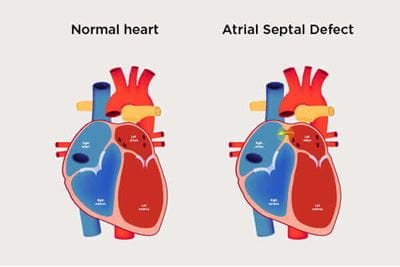What Is ASD?
 The atrial septum is the wall between the heart's upper chambers, called the right and left atrium. An ASD is a hole between these two chambers, a fairly common heart defect present at birth.
The atrial septum is the wall between the heart's upper chambers, called the right and left atrium. An ASD is a hole between these two chambers, a fairly common heart defect present at birth.
Small ASDs may close on their own.
Larger holes will cause changes in the heart and lungs over time, making the right pumping chamber work harder.
Refer a Patient to the Interventional Cardiology Program at UPMC Children's Hospital of Pittsburgh
To refer a patient, doctors can:
How Do You Treat ASD in the Heart Cath Lab?
ASDs can occur in different parts of the heart wall:
- Near the top of the septum = sinus venous.
- In the middle of the septum = secundum. We most commonly close this type in the Heart Cath Lab at UPMC Children's Hospital.
- Near the bottom of the septum = ostium primum.
Closing an ASD in the cath lab helps avoid the need for open-heart surgery.
We're not able to close all ASDs. The doctor will review your echocardiogram results to be sure this is the right treatment option for you.
During your heart cath, the doctor will:
- Make a small incision in your groin and insert a catheter into a blood vessel.
- Guide the catheter to your heart and use a special plug to close the hole.
- Remove the catheter.
You'll need to stay overnight in the hospital so we can observe you.









 The atrial septum is the wall between the heart's upper chambers, called the right and left atrium. An ASD is a hole between these two chambers, a fairly common heart defect present at birth.
The atrial septum is the wall between the heart's upper chambers, called the right and left atrium. An ASD is a hole between these two chambers, a fairly common heart defect present at birth.